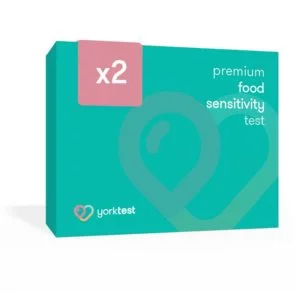What is gluten sensitivity?
Gluten intolerance or sensitivity is an immune response to the presence of gluten, a protein found in wheat and related grains, giving elasticity to dough, helping it to rise and keep its shape. It can also be hidden in other processed foods and sauces when used as a thickening agent. The reaction can occur any time up to 72 hours after eating foods with gluten which can make it difficult to pinpoint what the exact cause of your sensitivity is.
Those who suffer from a gluten sensitivity will also be wheat sensitive. However, those who are wheat sensitive aren’t always sensitive to gluten. They may be able to eat other grains like barley and rye, while people with gluten sensitivity may not. Again this makes it difficult to know which foods and ingredients to avoid when embarking on an elimination diet.
Gluten sensitivities are also different from a gluten allergy. With a food allergy, individuals can experience a more immediate reaction to the presence of gluten–in some cases life threatening. A gluten allergy is also a lifelong condition in which the body’s immune system releases IgE antibodies in response to the gluten protein.
What is the difference between gluten sensitivity and celiac disease?
Similar to a food allergy, celiac disease is a lifelong condition. It is currently estimated that 1 in 133 Americans have celiac disease and they may show similar digestive symptoms to those with a gluten sensitivity, which makes it hard for those with a sensitivity to know the difference. Basically, celiac disease in an autoimmune disorder in which the body’s immune system attacks the lining of the small intestine when you eat or consume gluten. Over time, it can cause intestinal damage, preventing the body from absorbing other important nutrients and ultimately can cause weight loss and many other related problems.
While both allergy and celiac disease require a life-time strict gluten-free diet to protect your health and find relief from digestive discomfort, if you have non-celiac gluten sensitivity you may be able to reintroduce gluten into your diet after a rest from it. Unlike celiac disease, you may see symptoms improve after eliminating and slowly reintroducing wheat and other gluten products after some time. If you feel that you may indeed have celiac disease, however, it’s very important to seek medical advice from a healthcare professional to discuss your concerns, as undiagnosed celiac disease causes severe long-term issues.
How to Test for Gluten Sensitivity
Identifying gluten sensitivity can be a complex process due to the wide range of symptoms and the overlap with other conditions, such as celiac disease and wheat sensitivity.
The first step in determining gluten sensitivity is self-observation. Noting symptoms after consuming gluten can be a potential indicator. As previously mentioned, typical symptoms might include headaches, fatigue, bloating, abdominal pain, weight gain and diarrhea.
You can then try the ‘elimination diet’, which involves removing gluten from your diet for a certain period, then reintroducing it and observing the symptoms. If symptoms minimize during the elimination period, it’s an indication that gluten might be the issue.
However, it’s important to note that while the elimination method can be effective, it may not be conclusive, as other conditions could also produce similar symptoms. That’s why food sensitivity testing is required to ensure a proper diagnosis and rule out other potential causes.
Can a Blood Test Detect Gluten Sensitivity?
At YorkTest, our food sensitivity tests analyze your IgG antibodies 1-4 through a simple finger prick blood sample, one of the most accurate methods of testing. The blood test can identify over 200 ingredients to which you may be sensitive and ranks their severity in an easy-to-read traffic light system to help you eliminate the right foods.
It’s important to note that our tests do not diagnose celiac disease or detect allergic (IgE) reactions to gluten. So, if you feel that you may have a gluten allergy, please consult your doctor or medical professional.
Understanding your body’s response to food is crucial to maintaining a healthy lifestyle. By considering both self-observation and sensitivity testing, you can gain a thorough understanding of your dietary needs. Keep in mind that regardless of the test results, always consult with a healthcare professional before making significant changes to your diet. You can consult with one of our nutritional therapists for one-on-one support.
If you suspect that your symptoms could be a non-celiac gluten sensitivity, we recommend taking a food sensitivity test from YorkTest to determine whether gluten is truly affecting your gut or whether other ingredients like wheat are the issue.

























